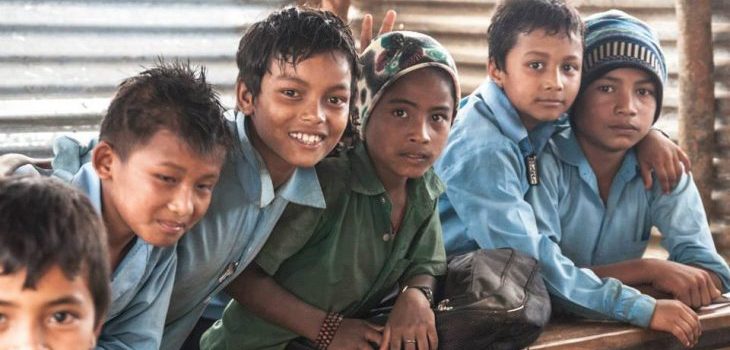The project background is an important part of every proposal. It can be very similar to the project rationale or project justification. It shows your donor that you did your homework and that your project is planned well. But where can you get the information and data for your project background? And how does one actually look like?
Here you have an example project background for Nepal. If you are planning or working in Nepal then you are welcome to use this blueprint. Be sure to add more specific information about your own project though, and add other relevant data according to the region and place.
Project Background of Nepal
Nepal is a landlocked country between India and China, two rapidly changing countries, with China in the North and India in the South, East, and West. The capital of Nepal is Kathmandu. The Constitution of Nepal, adopted in 2015, establishes Nepal as a federal secular parliamentary republic, divided into seven provinces and 77 districts.
According to the CIA’s 2018 report the country’s population was estimated to be 29,717,587. The population density is 204.43 people/sq. km. 19.7% of the population lives in urban areas while 80.3% still live in rural areas.
Health and education both are the prime concern for the country. The overall literacy rate (for the population age 15 years and above) is 59.6%. The number of schooling shows impressive progress. The HDR-UNDP 2018 report shows that in 1990, mean years of schooling for the global adult population was 5.8; by 2017 it had increased to 8.4. The country has made improvement in the maternal mortality rate that has declined from 539 deaths per 100,000 live births in 1996 to 258 in 2017. The fertility rate is 2.1 births per woman. However, the percentage of stunted children under five years of age is 36% and needs to be improved. Also, child marriage is still a prevalent problem in the country. The percentage of women ages 20–24 who were first married or in a union before the age of 18 is 40%.
Nepal remains one of the poorest countries and has one of the slowest-growing economies in Asia. The country’s economy is mainly based on agriculture. According to Trading Economics in 2017, the GDP from agriculture was only 254673.10 NPR Million. The ease of doing a business score in Nepal is 59.63.
Nepal is undergoing a historic transition toward a federal and secular republic. This brings windows of opportunity for the country to further reduce poverty, raise the income and achieve the SDG 2030 agenda.
If you are looking for more information, there are other sources that you could use like the OECD, World Bank or the UN. Unless mentioned, the data used here is retrieved from the HDR-UNDP.
Country: Nepal
Demographics
- Population: 29,717,587 (CIA World Factbook)
- Population Density: 204.43 person/sq. km (World Bank )
- Urban Population – 19.7% of the total population (CIA World Factbook )
Education
- Literacy rate (% ages 15 and older) – 59.6 %
Health
- Life expectancy at birth – 72.2 years (Female), 69 years (Male)
- Infant mortality rate– 28.4 deaths/1,000 live births
- Maternal mortality- 258 deaths/100,000 live births
- Stunting (% under five years ) – 36
- Total fertility rate – 2.1 births per woman
- HIV Prevalence adult ( % ages 15-49) – 0.2
Economy
- GDP – $ 24.47 billion (Trading Economics)
- Unemployment rate- 2.7 % (Statista)
- National poverty line: 25.2 %
Ecology
- Forest area(% of land area)- 25.36 (World Bank )
- Number of National Parks – 12
Other
- Gender Inequality Index value – 0.480
- Child marriage – 40%
- Human Development Index value – 0.574
- Corruption Rank- 124/180 (Transparency International)
- 2019 ease of doing business score- 59.63(World Bank)

